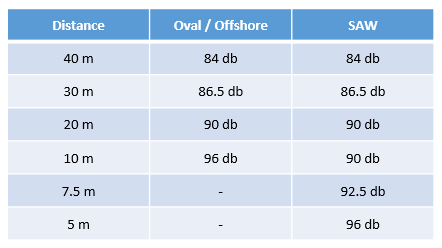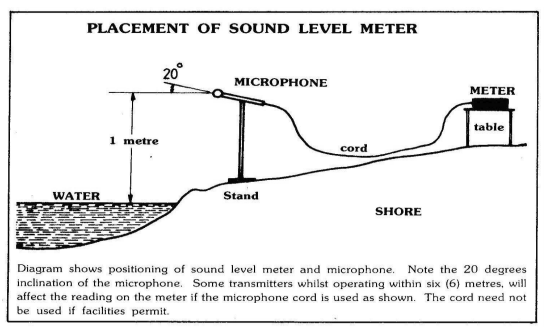
Competition organisers shall be responsible for the enforcement of these rules.

When heat racing one warning will be given to a competitor to allow them to make immediate modifications. Exceeding the limit subsequent to this warning will result in disqualification from that heat. In classes FSL and F½ K, exceeding the limit will result in disqualification from the attempt concerned.
At AMPBA sanctioned events, the AMPBA Sound Meter is preferred but an alternative may be used. All Sound Meters must be calibrated using the Calibrator designed for that model sound meter. If the AMPBA Sound Meter is used and the AMPBA Calibrator is not available for the entire meeting, due to conflicting meetings, the sound meter must be calibrated using the AMPBA Calibrator within Five (5) days of the meeting.
For Club and General meetings, Sound Meters used must be calibrated every twelve (12) months. The host club will be responsible for the security, postage, and insurance of the AMPBA Sound Level Meter and/or the calibrator, from the AMPBA Secretary and return. The meter and/or calibrator must be returned to the Secretary immediately after the meeting.
Where possible, meters used must be calibrated at the start of each different class or in the event of a sizeable weather change, but never within the running of a class.
The measurement will be taken when the boat passes the point where the microphone is at right angles to the course. Where possible, this point will be marked by a buoy. The distance between the buoy and the microphones is detailed in Section 12.1 of the rule book.

Competitors must not reduce the noise level of their boat as they pass the measuring buoy, by reducing throttle or other such means. Penalties, as detailed in Section 12.3 of the rule book, apply for this action.
Accordingly, the silencer should be installed on the boat in the most horizontal position possible. The final outlet must not in any way be masked by a ‘screen to divert the sound’.
The microphone should be between 1 – 1.5 meters above the water level. Measurements shall be taken towards the water to eliminate lateral sound reflections and differences in humidity which could affect the readings. A wind suppression device is to be fitted.
Individual states may specify an alternative lower noise level to comply with local government/authority laws. Such a lower level shall be advised to all states and the AMPBA immediately it is in force and in any case, not less than one (1) year before the said event is to take place.
